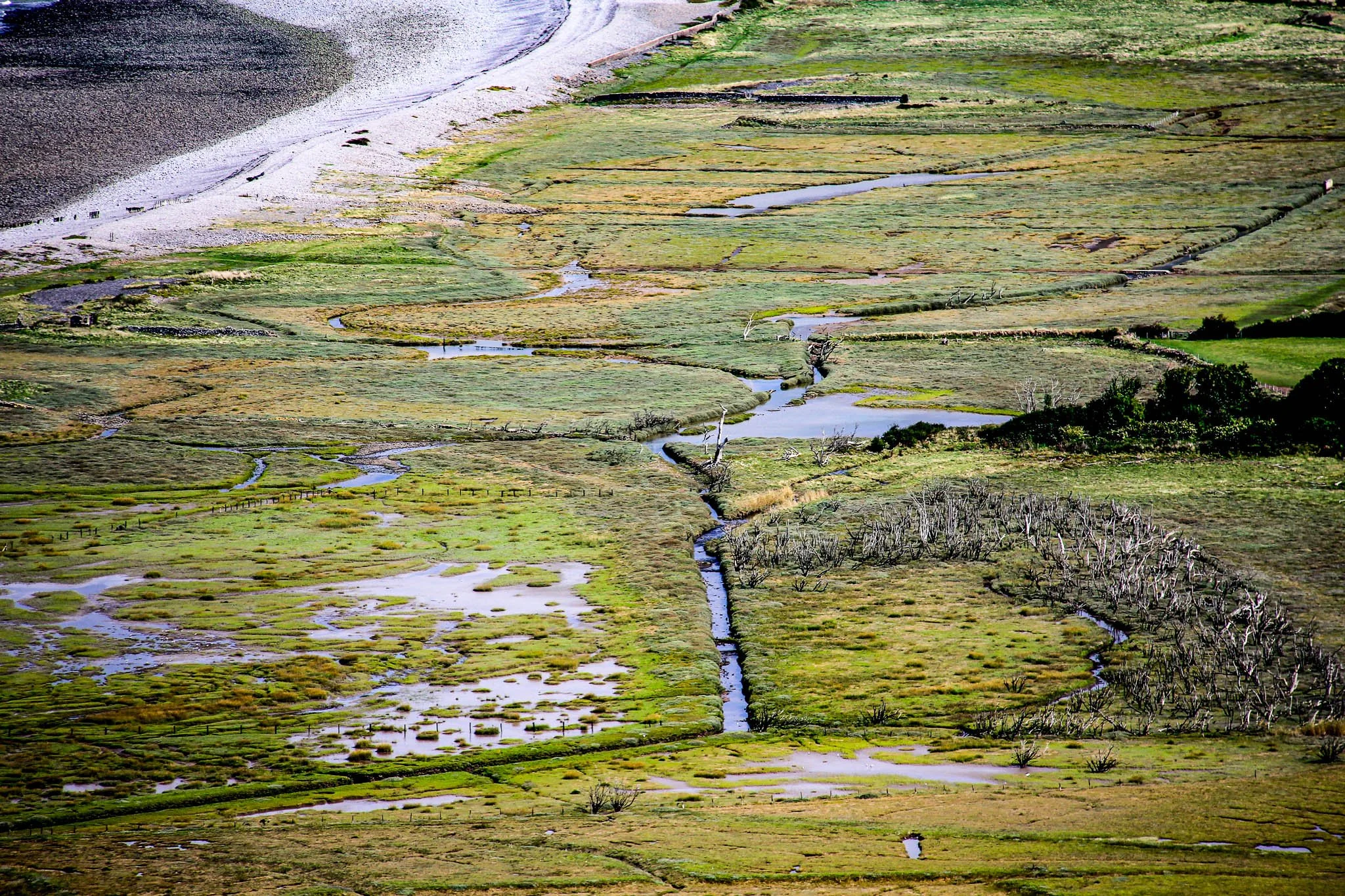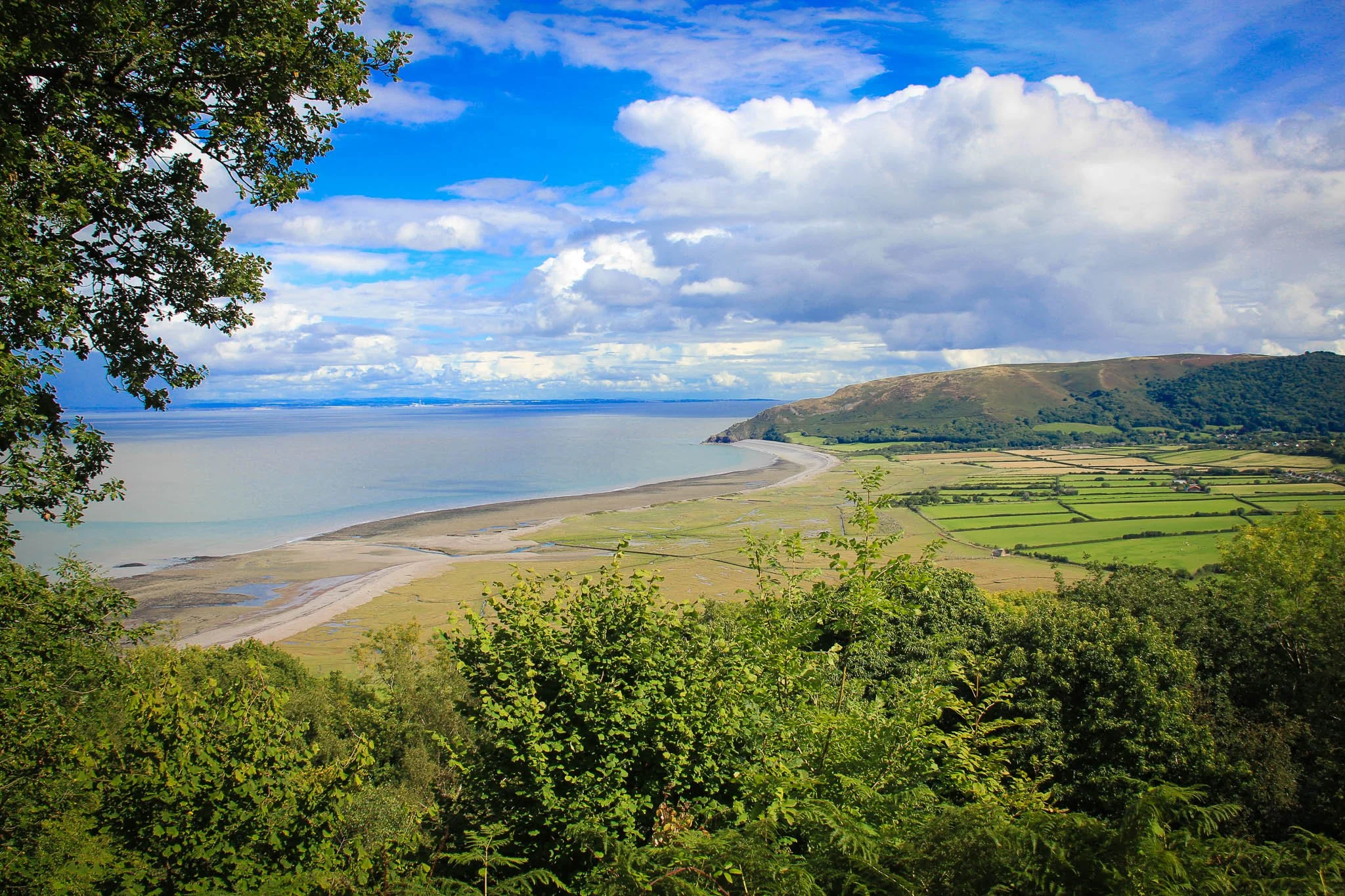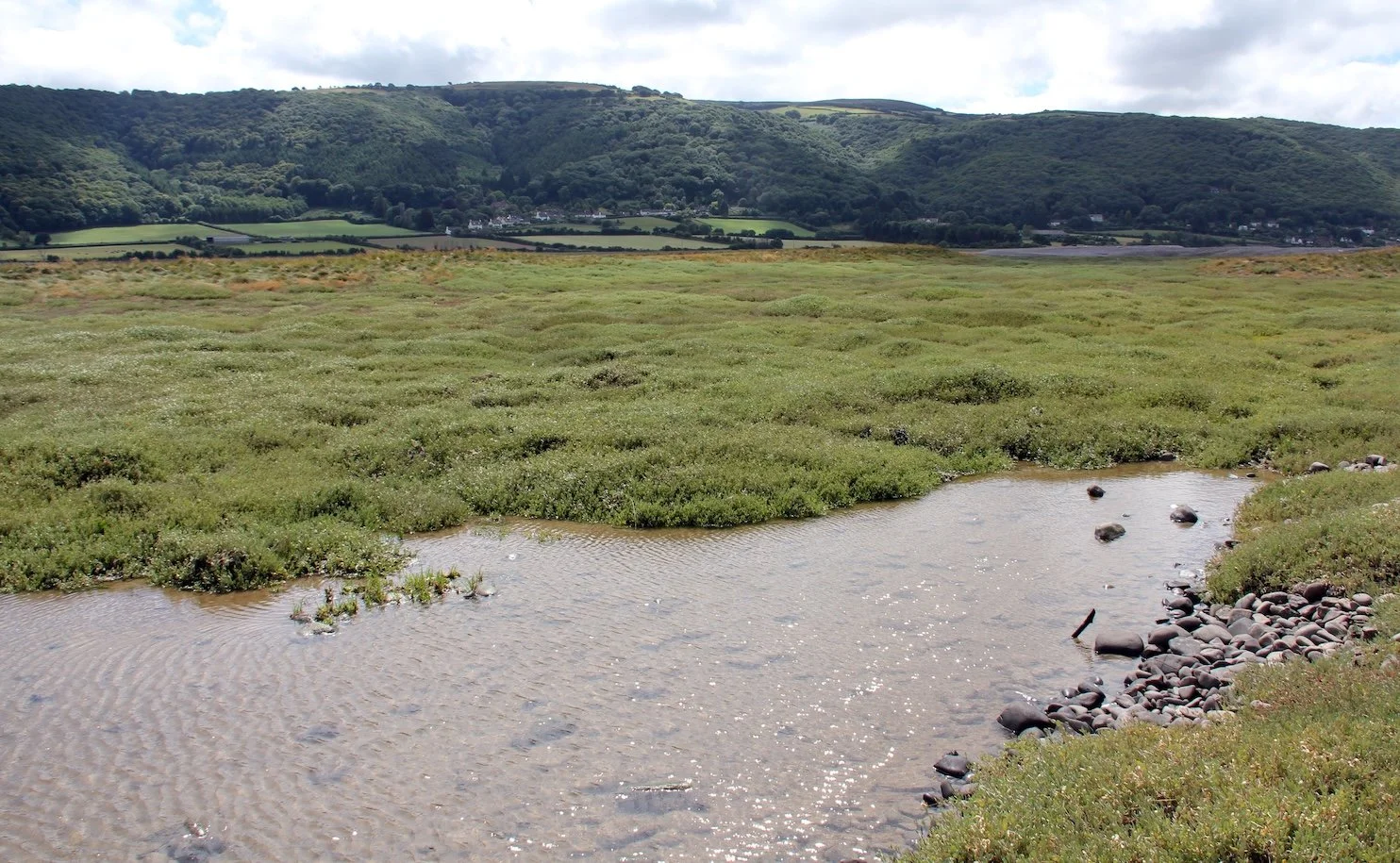Porlock Weir and Porlock Marsh: Where Exmoor Meets the Sea
Perfect Porlock Weir
Porlock Weir is one of my favourite places in the world and I have written about it many times. As the nicest of our local seaside haunts I’ve been visiting the place since I was a small boy - and later writing many different newspaper articles based on many different subjects down there where the Exmoor hills dip to meet the sea.
I popped down to the Weir this week with a spare hour to spare and walked in the rain.
Porlock Marsh: Britain’s Fastest Changing Landscape
And here’s an article I penned 25 years ago…
It looks like a land where dinosaurs might roam, but Porlock Marsh, not far from the North Devon - Somerset border, is Britain's newest wetland and officially the country's fastest changing environment.
Not long ago you'd have seen sheep and cattle grazing here. For centuries the low-lying meadows just north of the village of Porlock were protected by an immense natural shingle ridge, but storms in the late 1990s breached the pebble bank and hundreds of acres were inundated by the sea at high tide.
Now the Exmoor National Park Authority has signed a management agreement with a local landowner in a bid to ensure that this extraordinary landscape will be protected as it develops and changes.
Porlock Marsh
How Nature Reclaimed Porlock Bay
Though just how it will change, no one is sure. "We're open to the forces of nature," says the National Park's conservation officer David Lloyd. "It's a very exciting place because in Britain we're not used to seeing this sort of major landscape change. We don't know for certain how it will look in years to come. We don't really know how much bigger the breach will get."
He explained how the shingle ridge used to be much further out to sea, stretching in a more-or-less straight line two miles across Porlock Bay, between Gore Point in the west and Hurlestone Point in the east.
Porlock Bay
But over the years two factors altered the natural dam. Wave action pushed the ridge ever inland, causing it to curve and lengthen. At the same time the ridge became starved of its natural material. It is fed with shingle from the west in an action known as littoral drift, but the source is finite. In latter years not enough shingle was being fed to maintain the ridge—partly, it is thought, due to the development of the harbour, car park and various groynes at Porlock Weir.
The Birth of a New Coastal Habitat
In 1996 the first major hole appeared. Grass and trees do not take kindly to salt water and in six years the place has become a desert. A beautiful, unique and exciting desert - as I found out when I toured the area with park authority ranger Tim Parish.
"It is the most incredible landscape," he said as we climbed out of his Land Rover at the end of a long and muddy lane. "And it is also a little dangerous. We don't advise people to go out along the ridge towards the breach. At spring tides in particular, it can be hazardous. People's dogs have been swept away."
As we walked we could see the tortured limbs of dead trees whose roots have been cloaked in a sort of primeval slime. The meadow grass has long gone, but is being replaced by other plants like samphire. Beyond the trees a new lagoon stretches to the shingle ridge, and we could see coffee-coloured waves pumping water in from the Bristol Channel.
Huge flocks of curlew and lapwing flew hither and thither in the nor-westerly gale and, out on the mud, shelduck took flight in a dazzle of black and white wings.
Managing the Future of Porlock Marsh
"We've had to divert the South West Coast Path, it used to run along the top of the shingle but now we've a new permissive route that passes inland of the lake," said Tim, explaining that this development was all part of the management agreement negotiated with Porlock Manor Estate.
As we approached the sizeable expanse of brackish water we could see how the new environment must have come as quite a shock to local people.
"Yes I think it was something of a shock and there was a great deal of discussion about the future of the place" says David Lloyd.
Porlock people saw millions being spent on sea-defences at Minehead (six miles along the coast) and some of them wanted bulldozers to come and plug the breach.
"But how long could you go on bulldozing the shingle and would it work anyway?" asked the conservation officer, pointing to the huge build-up of stones that is occurring under Hurlestone Point in the corner of the bay. He concluded: "What has happened here has been the result of a natural process."
An Ever-Evolving Coastal Landscape
In the end the authorities deemed it to be a case of fait accompli. The National Trust, which owns half the marsh, got on with the job of adapting its management of the area and now the park authority has come to an agreement over the 80 hectares which make up the other half.
"We will be working on what we can do in the Marsh," says Mr Lloyd. "There are issues like people walking their dogs in the nesting season. But on the other hand we'd like to improve access - we could have things like board-walks and hides, perhaps an interpretation area. We could also develop some higher areas where birds like lapwing and redshank could nest safely."
One thing is certain. With global warming threatening to raise sea levels, Porlock Marsh is set to become a permanent feature on the West Somerset coast.
The poet Robert Southey described Porlock as “The End of the World” - and that was 200 years ago when the village was protected by acres of low-lying fields. Now, as the primeval swamp creeps closer to the community, his words seem to have finally come home to roost.
Ada Lovelace and the Porlock Connection
Keywords: Ada Lovelace, Ada Lovelace Day, Exmoor history, Ashley Combe, Porlock Weir, women in science, Charles Babbage, first computer programmer, Ada Lovelace Somerset connection
I also once wrote about Lady Lovelace who used to live near the Weir….
It has been rare indeed that women have been able to enter the history books as leading lights in the world of science, technology, engineering and maths - and rarer still that such a person should be linked to a remote West Country community.
But the mathematician Ada Lovelace certainly makes the cut when it comes to fame in the world of numbers and computing - and her connection with the Exmoor village of Porlock is the subject of annual celebration.
Worthy Combe in the rain
Ada Lovelace Day: Celebrating Women in STEM
Ada Lovelace Day, held every October, is an international celebration of the achievements of women in science, technology, engineering and maths (STEM).
Lovelace, daughter of the romantic poet Lord Byron, is best known for her work on Charles Babbage’s Analytical Engine - and it was she who recognised that the contraption had many applications beyond pure numeric calculation.
The World’s First Computer Programmer
Ada realised the full potential of what she called a “computing machine” and because of that she is regarded as the world's first computer programmer.
Augusta Ada King, Countess of Lovelace, was born in 1815 and tutored in mathematics and science – subjects often forbidden for girls at the time – at the insistence of her mother.
As a teenager aged just 17, she met the mathematician Charles Babbage, inventor of the mechanical calculator, who was to become her mentor. Soon after that she was commissioned to translate a French article about Babbage’s wonder machine - and while doing so, she was able to add her own intellectual commentary upon the subject of computing.
In a book called ‘She: A Celebration of 100 Renegade Women’, author Harriet Hall explains: “She theorised that Babbage’s machine had the potential to translate music, pictures and text into digital form.”
A Vision Ahead of Her Time
Her notes were respected and published in 1843, but the theory within was so revolutionary that it took over a century for it to be recognised as the first computer algorithm and Lovelace as the first computer programmer.
Lovelace wrote:
“The Analytical Engine might act upon other things besides number, were objects found whose mutual fundamental relations could be expressed by those of the abstract science of operations... the engine might compose elaborate and scientific pieces of music of any degree of complexity or extent.”
Ashley Combe: Ada Lovelace’s Porlock Retreat
It was in 1835 that Ada married William King, 8th Baron King and later 1st Earl of Lovelace. They had three children: Byron, Annabella and Ralph Gordon. The family lived at Ockham Park in Surrey, but spent their honeymoon in the romantic setting of Ashley Combe, in the steep forests high above Porlock Weir.
The King family owned a large West Somerset estate that included Ashley Combe, Yearnor, Culbone, Sparkhayes and Bratton near Minehead. Ashley Combe was built in 1799 as a hunting lodge and improved at great expense by Lord King in 1835 for the honeymoon. It later became a summer retreat for the couple and was continually being improved.
The Secret Tunnels of Ashley Combe
The family and its fortunes were apparently very much directed by Ada whose domineering was rarely opposed by William. As an engineer he was more interested in designing tunnels than running the family - a hobby which he put into practice at Ashely Combe.
The house, built in the fashionable Italianate style, had a tall clock tower and extensive gardens which consisted of terraced walks, alcoves, spiral stairs and woodland trails. Beyond these were more open gardens which contained various hot-houses and decorative towers – relics of which can still be seen today.
The tunnels took tradesmen from the road to the trade entrance of the big house so their carts could not be seen by its occupants. A woodland walk and steps led down to the beach where a bath-house was built into the cliff to enable Ada to bathe in privacy.
A Scandalous Mind and Enduring Legacy
During scientific researches on her regular visits to the Porlock family home, Ada used to visit Andrew Crosse, known as the Wizard of The Quantocks for his early experiments with electricity, and was said to have established a rather “shadowy” relationship with his son John.
Indeed, Ada was not all sweetness and scientific light - she flirted with scandals, took a relaxed approach to extra-marital relationships with men and loved gambling - an addiction which led to her forming a syndicate with male friends and an ambitious attempt to create a mathematical model for successful large bets. This went disastrously wrong, leaving her deeply in debt to the syndicate.
Lovelace died of cancer, aged just 36, in 1852 - but has since received a multitude of posthumous accolades. More than a century later, in 1980, the US Department of Defence named a computer language after her, and Ada Lovelace Day is celebrated every October in recognition of her groundbreaking contribution to computer technology.















